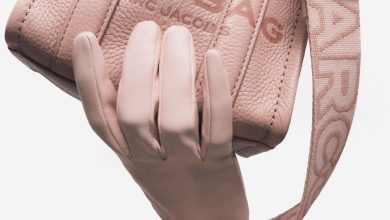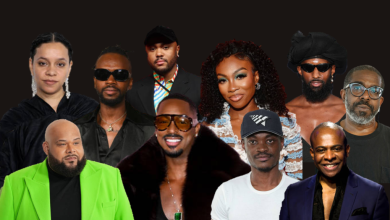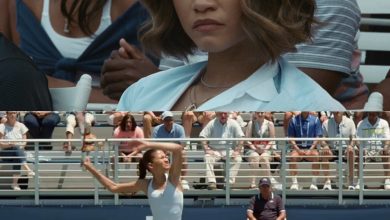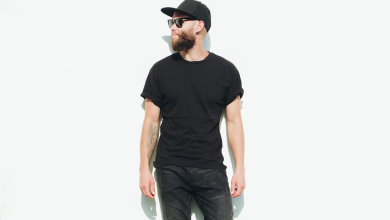Let Young Black Girls Play With Fashion
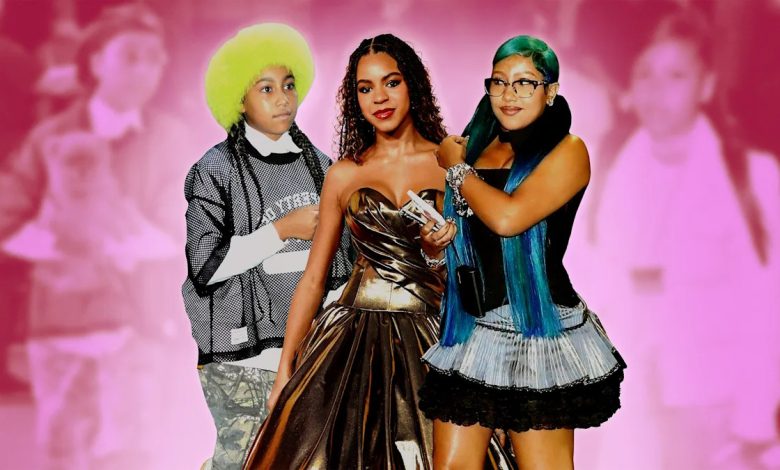
Composite Images: Getty Images, BACKGRID. Treatment by Bea Oyster.
In this op-ed, style editor Aiyana Ishmael addresses the systemic racism young Black girls like North West and Blue Ivy face when it comes to fashion discovery and personal exploration.
Every time North West is paparazzi-ed in a new outfit, the internet has the same conversation about her clothes and appearance being too “grown up.” The policing of Black bodies is an inextricable part of Western culture that young Black girls — even the most famous of them all — cannot escape. In reality, the conversation around North West has little to do with the 12-year-old’s actual appearance. It’s a prime example of implicit bias (sometimes, outright racism) and the adultification of young Black girls.
Throughout history, Black women’s bodies have been ostracized, put on display, and ridiculed for things out of their control. Black girls are often perceived as more adult, regardless of how young they truly are, their bodies being used against them and sexualized when they deserve to simply be kids.

MEGA
As the daughter of Kim Kardashian, North West has been thrust into the limelight because of her ultra-famous family. Therefore, it becomes quite impossible for her to avoid constantly being perceived by the internet, and her fashion choices are always at the top of those critiques.
Last Halloween, some headlines suggested that Kardashian was “under fire” for letting North wear a corset top as part of her costume. In a now-deleted video from North’s joint TikTok account that she shares with her mom, North is seen wearing a strapless Princess Tiana costume, while her other friends, who all seem to be around the same age as her, don other Disney Princess costumes.
It’s important to note that one of North’s friends is wearing a strapless Moana costume in the video. The juxtaposition is glaring. The hypercritical focus being on North when the other young girls in that video are wearing similarly styled costumes not only signifies the societal pressure Black girls are forced into, but the added layer of what it means to be a famous Black girl right now.

Allen Berezovsky/Getty Images
Why should North be forced to alter her Halloween costume to make adults comfortable, when her friends can wear similar trendy costumes? Her sartorial self-exploration is fundamental for growth, without online watchdogs adjudicating her choices.
A few weeks ago, Entertainment Tonight used the phrase “looks all grown up” in a headline when referencing North wearing a black corset and pleated skirt with newly dyed blue hair. At face value, the language might seem harmless, but it’s yet another method of the adultification bias that young Black girls like North West face. According to a report from Georgetown Law’s Center on Poverty, as early as age five, Black girls are more likely to be seen as older, more mature, and less in need of comfort, protection, or guidance than their peers.
When I was nine years old, I went to a CiCi’s Pizza with my best friend and her mom for lunch. The cashier stopped me because of the kids’ meal my friend’s mother had purchased for me. She asked if I had my birth certificate with me, and said I “didn’t look 10.” I remember feeling embarrassed as I watched my best friend’s mother call my mom to prove my age. They ultimately let me in with the kids’ meal price, but that moment never left me.
I was taller than most girls my age and had stopped wearing a training bra at age eight. I was forced to confront my body in ways my non-Black friends didn’t have to at such a young age. It was ingrained into me, and so many other young Black girls, that our developing bodies were the problem, not how the people around us reacted to them.
I spent most of my childhood hiding myself behind oversized jackets and hoodies — something North West wears a lot of, but those outfits are never talked about — because I was more developed. I never got the chance to find my own personal style growing up, and still, at 27, I sometimes sink back into the tween version of myself, worried that a low-cut top, which all my friends would wear without hesitation, is too revealing and will bring me unwarranted attention.
Young Black girls deserve to have fun with fashion and try the trends their non-Black friends are trying out, because those are the most pivotal years to see what excites you. Fashion trends and beauty trial runs are what every girl deserves, but for some, that practice isn’t promised because they’re forced to shoulder a responsibility that isn’t theirs to bear.

Kim Kardashian Reveals How North West Deals With Public Criticism
The reality star and mogul got candid about her daughter’s evolution in the public eye.
On a recent episode of the Call Her Daddy podcast, Kim Kardashian spoke out against the internet’s discourse about North’s outfits. “It’s really hard and it’s really interesting because all the kids are wearing the same things, but then my daughter tries to wear it and then I’m like, ‘Okay, we’re never wearing that again.’ Unfortunately, we made that mistake in front of the whole world,” Kardashian said. “And she’s, you know, usually a girl [who] dresses like a tomboy most of the time. She wanted to try something that her friends were wearing and went to the same place that they went to, and they all got these outfits.”
This idea that Kim needs to “cover North up” is intrinsically connected to victim-blaming. Young Black girls shouldn’t have to live in fear of being sexualized or being deemed “grown” because they, like any other young girl, want to find what types of outfits make them feel confident.
This kind of adultification that so many young Black girls face is an example of systemic racism and respectability politics, and it’s also perpetuated within the Black community. A phrase like “too fast,” which insinuates that one is engaging in sexual activity at an early age, commonly comes from the mouths of Black adults, that then enforces a shift of responsibility on the child — when Black kids deserve for their younger years to be just as sartorially explorative as white children.
Of course, historically speaking, Black children have been forced to grow up quickly because of slavery and segregation. But in the modern age, despite ongoing systemic issues plaguing Black children, we should not let fashion be yet another challenge. Often deemed frivolous, fashion discovery is a primary way in which young people can communicate and connect with those around them.

CBS Photo Archive/Getty Images
North West isn’t the only young, famous Black girl to deal with this type of dehumanizing narrative. Blue Ivy, the 13-year-old daughter of Beyoncé and Jay Z, has faced vitriol throughout her entire childhood for her appearance; just last year, while attending the Mufasa: The Lion King premiere, internet users claimed the strapless dress worn by Blue was inappropriate, when there was nothing remotely revealing about the ball gown. It was, in fact, more about the young Black girl wearing it.
The same thing happened to Shai Moss, daughter of rapper Bow Wow and dancer Joie Chavis, whose 2025 BET Awards outfit had a hip cutout they’d initially missed when approving the look. “She had to deal with thousands of grown ass people talking about her… That’s just a mistake that’s not going to happen again,” Chavis said in a live video, one she posted because her “daughter asked her to say something because people were attacking her.” According to Chavis, Moss didn’t have a backup outfit and had to walk the carpet anyway.
When we’re critical and hyper-aware of Black children’s bodies, especially in connection to their clothes, we’re not giving them the chance to make mistakes with fashion, the way non-Black kids get to. Sometimes, things are out of their control. Sometimes they’re just trying to be like everyone else. Sometimes they’re finding their personal style — one trend at a time — and instead of brutally criticizing, we should just let them live.
Originally Appeared on Teen Vogue
Want more style stories from Teen Vogue? Check these out:
